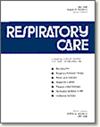Ventilation and Oxygenation During and After Adult Cardiopulmonary Resuscitation: Changing Paradigms.
IF 2.4
4区 医学
Q2 CRITICAL CARE MEDICINE
引用次数: 0
Abstract
Cardiac arrest (CA) remains a major cause of death despite advancements in cardiopulmonary resuscitation (CPR), post-resuscitation care, and international efforts to develop evidence-based guidelines. Effectively managing ventilation and oxygenation during and after CPR is vital for patient survival and neurological outcomes, yet it remains a challenging task. This review examines current strategies for ventilation and oxygenation during and after CPR, focusing on evidence-based guidelines, the balance between ventilation effectiveness and risks, and proposed methods for monitoring ventilation quality. It emphasizes the need to provide adequate ventilation and oxygenation during and after CPR while avoiding hyperventilation and hypoventilation, which can negatively impact resuscitation and post-CA outcomes. The review also explores mechanical ventilation as an alternative to manual methods and the use of feedback devices. The impact of post-CA ventilation and oxygenation on patient outcomes and recommended management strategies are discussed. Finally, the review highlights current gaps in the literature and the need for more well-designed large clinical studies, such as the impact of different ventilation variables (tidal volume and respiratory rate) on the return of spontaneous circulation (ROSC) and long-term outcomes.成人心肺复苏期间和之后的通气和供氧:改变范式。
尽管心肺复苏(CPR)和复苏后护理技术不断进步,国际社会也在努力制定循证指南,但心脏骤停(CA)仍然是导致死亡的主要原因。在心肺复苏期间和之后有效管理通气和氧合对患者的存活和神经功能预后至关重要,但这仍然是一项具有挑战性的任务。本综述探讨了心肺复苏术中和术后通气和供氧的当前策略,重点关注循证指南、通气效果和风险之间的平衡以及建议的通气质量监测方法。综述强调了在心肺复苏期间和之后提供充分通气和供氧的必要性,同时避免过度通气和通气不足,因为这会对复苏和心肺复苏后的结果产生负面影响。综述还探讨了机械通气作为人工方法的替代方法以及反馈装置的使用。还讨论了 CCA 后通气和氧合对患者预后的影响以及推荐的管理策略。最后,综述强调了目前文献中存在的不足,以及需要更多设计良好的大型临床研究,例如不同通气变量(潮气量和呼吸频率)对自发循环恢复 (ROSC) 和长期预后的影响。
本文章由计算机程序翻译,如有差异,请以英文原文为准。
求助全文
约1分钟内获得全文
求助全文
来源期刊

Respiratory care
医学-呼吸系统
CiteScore
4.70
自引率
16.00%
发文量
209
审稿时长
1 months
期刊介绍:
RESPIRATORY CARE is the official monthly science journal of the American Association for Respiratory Care. It is indexed in PubMed and included in ISI''s Web of Science.
 求助内容:
求助内容: 应助结果提醒方式:
应助结果提醒方式:


